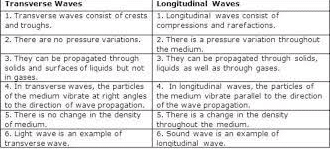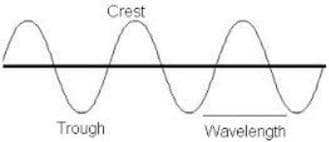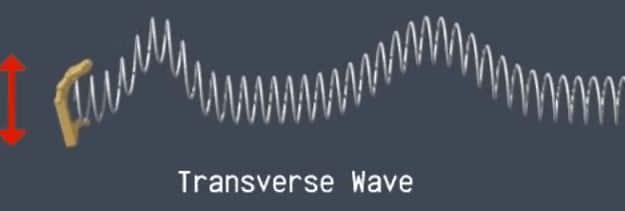 Transverse waves and longitudinal waves are types of mechanical waves. The basic difference between transverse and longitudinal waves is that in transverse waves particles of waves move perpendicular in the direction of the wave while in longitudinal waves particles move horizontally in the direction of the wave.
Transverse waves and longitudinal waves are types of mechanical waves. The basic difference between transverse and longitudinal waves is that in transverse waves particles of waves move perpendicular in the direction of the wave while in longitudinal waves particles move horizontally in the direction of the wave.
Spring waves, water waves, and sound waves are examples of Transverse and Longitudinal waves.
Now!
Stay with us to know the examples of transverse and longitudinal waves in a few minutes.
What are transverse waves?

The waves in which the particles of the medium vibrate along a line perpendicular to the direction of propagation of waves are called transverse waves.
Examples of transverse waves
Here is the list of some transverse waves examples:
- Light waves
- Radio waves
- Water waves
- Heat waves

In transverse waves, each section of the medium in which a
longitudinal wave passes oscillate over a very small distance, whereas the wave itself can travel large distances. Wavelength, frequency, and wave speed all have to mean a longitudinal wave. The wavelength is the distance between successive compressions or rarefactions, and frequency is the number of compressions or rarefactions that pass a given point per second. The wave speed
is the speed with which each compression or rarefaction appears to move; it is equal to the product of wavelength and frequency. And is given as:
V = f λ
How Are Transverse waves produced?

Consider a spring is lying on a smooth table. One end of the spring is fixed while the other end is free which is held by the hand. If the hand is suddenly moved up and down then a wave pulse is produced.
The figure shows that the displacement of the spring is perpendicular to the direction of the waves travel, which shows that these waves are t.waves.
Let’s see video
Longitudinal waves

The waves in which particles of the medium vibrate along the propagation of waves, such waves are called longitudinal waves.
Compressions and Rarefactions travel along with the spring. The compressions are those parts where the slinky of spring are close together. Rarefactions are regions where the slinky are spaced apart. Compressions and rarefactions correspond to the crests and troughs of a transverse wave.
Examples of longitudinal waves
Some common examples of Longitudinal waves are:
- Sound waves
- Spring waves (Compressional waves)
- A vibrating drumhead
How are longitudinal waves produced?
If the end of the spring is moved back and forth. In this case, the displacement of the spring is in the direction of the wave’s travel, these types of waves are called longitudinal waves.
If you are interested in video content then watch the video:
Transverse Waves Vs Longitudinal waves:
Related topics
- Types of waves
- Difference between mechanical and electromagnetic waves
- Difference between mechanical and matter waves
what are the equations of motion for each type